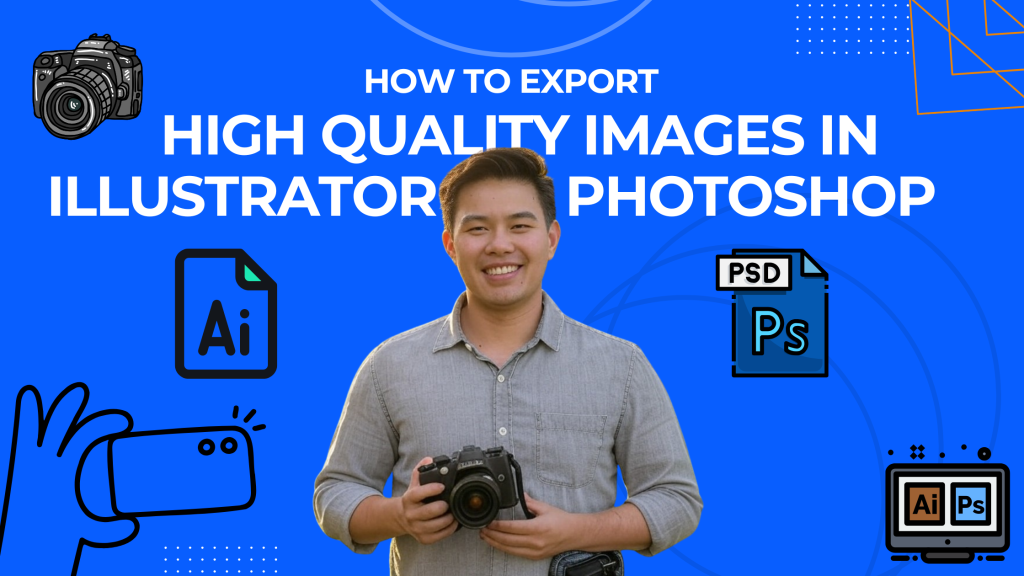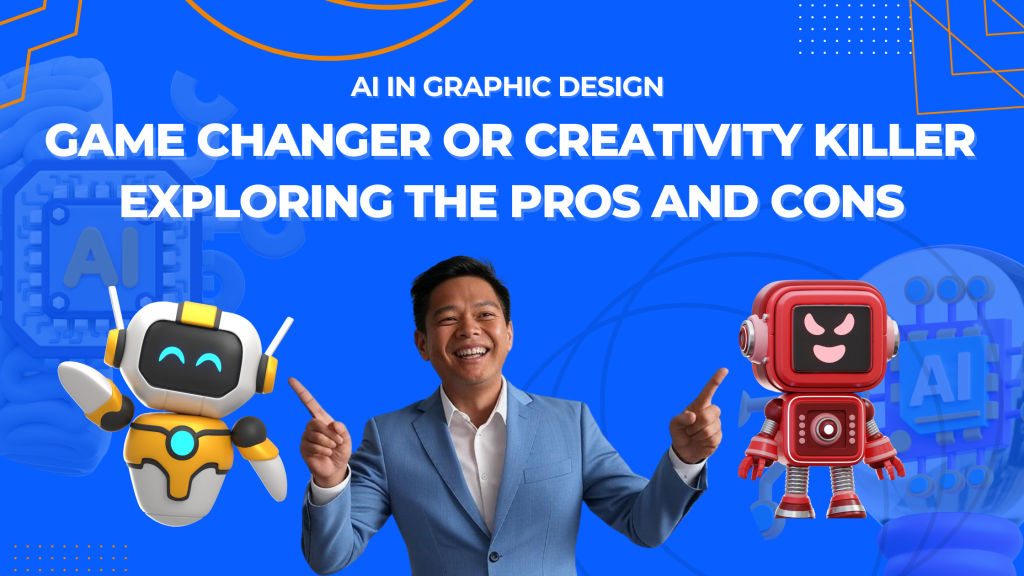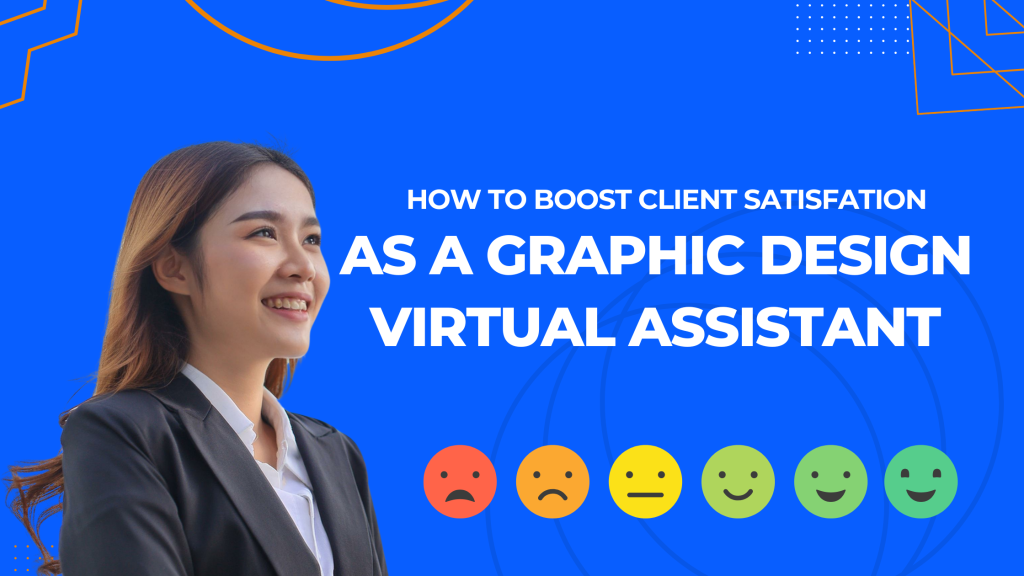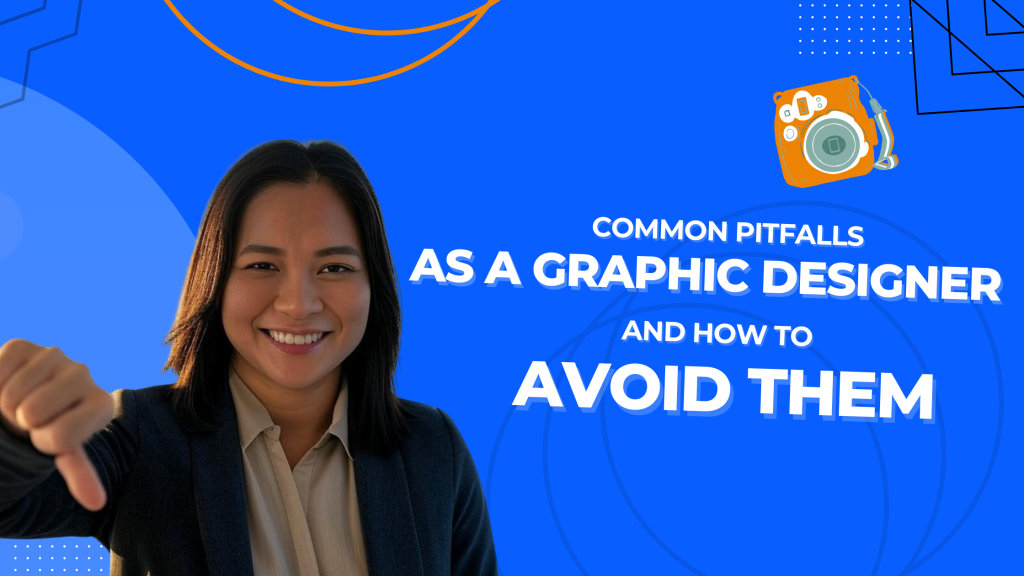How to export high-quality images in Illustrator/Photoshop

Home About Services Blog Go High Level Graphics Design Video Editing SEO Project Management Customer Service Bookkeeping Get Started Home About Services Blog Go High Level Graphics Design Video Editing SEO Project Management Customer Service Bookkeeping Get Started Home About Services Blog Go High Level Graphics Design Video Editing SEO Project Management Customer Service Bookkeeping Get Started Home About Services Blog Go High Level Graphics Design Video Editing SEO Project Management Customer Service Bookkeeping Get Started How to export high-quality images in Illustrator/Photoshop Jan 20, 2025 | Ken Llana Exporting designs can be extremely frustrating. From fuzzy pictures and high blurred edges to poorly rendered colors, everything can compromise what would otherwise be a masterpiece. Ensuring whether the visuals you are preparing are for social media, print projects or websites, image quality is essential. It is important to understand that saving images is not as simple as it seems. Things like color profiles and resolution settings can drastically change the quality of a project. It can often be overwhelming, especially for beginners. The same settings do not apply for SVC, PNGs, prints or web graphics which is where most designers make mistakes. With the right knowledge and understanding, achieving a polished and professional look rather than an amateur one is easy. In this article, we will talk about exporting from Photoshop or Adobe Illustrator and the different approaches which need to be utilized. You’ll be able to learn how and which file format can suit your project, which settings to use and even the things to avoid in order to prevent altered picture quality. Tips on creating sharp, vivid visuals while also maintaining file size and transparency will be covered as well. Ready to ensure your designs look their best? The guide tackles actionable steps for users to up their export game. Whether you’re a novice learning the ropes or a professional designer wishing to button up your workflow, this guide has got your back. Now let’s export your designs with clarity and precision. What is the Importance of Exporting High-Quality Images? Professional projects are greatly reliant on high-quality images . Whether it is a neat website, an eye-catching post on social media or an elegant printed brochure, the images show what your brand represents. Blurry or pixelated images? They scream unprofessionalism. Crisp, vibrant images? They capture attention and build trust. For web projects, high-quality images enhance user experience. They load quickly without sacrificing clarity, ensuring your audience stays engaged. For print materials, there is less room for compromise—high Resolution and accurate colors are always needed. A beautifully crafted design could be destroyed by a poorly exported image that comes with annoying fuzzy details and bland colors when printed. With regard to usability, high-quality exports also allow for proper integration. Do you have a design that requires Brighting or replanning? Correctly exported images are put to good use in any scope without distorting. It’s all about making that lasting impression! Why is Resolution Crucial When Exporting Images? Resolution determines the sharpness and clarity of an image. Low resolution? Expect blurry, pixelated results, especially in print! High resolution (300 PPI or more) ensures crisp details and professional quality. For the web, 72 PPI suffices to balance clarity and load speed. Simply put, resolution impacts usability and visual impact. What is the Difference Between Vector and Raster Graphics? Vector graphics maintain image quality regardless of scaling due to their use of scalable paths. Logos and illustrations are great examples of imagery that retain full clarity. On the contrary, raster graphics are pixelated. In regard to photographs, raster images are ideal but lose their quality when resized. This explains blurry photos. Vectors are well suited for crips imagery while rasters capture vivid details with ease. Striking a balance between both is the key to high-quality visuals. How to Adjust Resolution Settings for Web and Print in Illustrator and Photoshop Now, Let’s Review What You Would Do to Modify the Screenshot and Print Settings in Illustrator and Photoshop: In Adobe Illustrator: Click the File tab, then select Export followed by Export As. Specify the format to which the file should be exported, for example, PNG or JPEG. In the dialog which appears next…Designs set for the internet should have their Set Resolution specifically adjusted to 72 PPI. Designs intended for printing should have their Set Resolution specially adjusted to 300 PPI or higher. To export the image, select the word ‘Export.’ In Adobe Photoshop: Find and open the file and go to Image and then select Image Size. Adjust the value located in the Resolution box: This value should be set to 72 PPI for the web to keep the file small. This value should be set to 300 PPI for print to retain the fine details. Click OK to close the dialog box. Export the image. Pro Tip: For best results, adjust settings before exporting the file anywhere! File Formats When Should You Export Images as PNG, JPEG, or Other Formats? Choosing the right file format depends on the image’s purpose! PNG is ideal for graphics that need transparency, like logos or web icons. It also preserves sharp edges and offers lossless compression, making it great for high-quality visuals. JPEG, on the other hand, is perfect for photographs or detailed images where file size matters. It uses lossy compression, reducing size while maintaining good quality—perfect for websites or social media. For scalable designs like illustrations, SVG is a winner as it keeps vectors crisp across all sizes. PDFs work best for print materials, maintaining resolution and layout integrity. Each format serves a purpose, and knowing which to use ensures your images look their best, whether online or in print. Trust me, picking the right one makes all the difference! What are the Advantages of Using PDF for Exporting Images? PDFs are a powerhouse for print and presentations! They preserve high resolution, ensuring your images look crisp and professional. Unlike other formats, PDFs maintain layout integrity, perfect for multi-page designs like brochures or
AI in Graphic Design: Game-Changer or Creativity Killer? Exploring the Pros and Cons

Home About Services Blog Go High Level Graphics Design Video Editing SEO Project Management Customer Service Bookkeeping Get Started Home About Services Blog Go High Level Graphics Design Video Editing SEO Project Management Customer Service Bookkeeping Get Started Home About Services Blog Go High Level Graphics Design Video Editing SEO Project Management Customer Service Bookkeeping Get Started Home About Services Blog Go High Level Graphics Design Video Editing SEO Project Management Customer Service Bookkeeping Get Started AI in Graphic Design: Game-Changer or Creativity Killer? Exploring the Pros and Cons Dec 20, 2024 | Ken Llana In today’s fast-evolving digital world, graphic design has become an integral part of every successful business. From creating visually stunning marketing materials to building compelling social media content, graphic design plays a pivotal role in shaping brand identity. However, the advent of Artificial Intelligence (AI) has introduced new possibilities and challenges to the graphic design industry. Many businesses now wonder whether AI is revolutionizing creativity or hindering it. In this article, we will explore how AI is changing graphic design, the pros and cons it brings to the table, and how hiring a graphic design virtual assistant can strike the perfect balance for businesses aiming for cost-effective yet innovative design solutions. Get Started The Rise of AI in Graphic Design AI has disrupted numerous industries, and graphic design is no exception. Tools like Adobe Sensei, Canva’s Magic Design, and DALL-E have demonstrated how AI can automate repetitive tasks, suggest design improvements, and even create entirely new visual concepts. These innovations allow designers to work faster and more efficiently, but they also raise questions about the role of human creativity. Businesses can now produce high-quality designs with AI tools, but these tools are only as effective as the person operating them. This is where the expertise of a graphic design virtual assistant comes into play. Combining the power of AI with a professional’s creative insight ensures businesses achieve unique and tailored designs without compromising their brand’s voice. Pros of AI in Graphic Design 1. Efficiency and Speed AI enables designers to complete tasks in a fraction of the time. For instance, generating variations of a logo, resizing images for different platforms, or selecting complementary color schemes can now be done in seconds. Businesses working with a graphic design virtual assistant can leverage these AI tools for quicker turnarounds without sacrificing quality. 2. Cost-Effectiveness By automating repetitive tasks, AI reduces the time and effort required for complex projects. This translates to lower costs for businesses, especially when hiring a virtual assistant skilled in graphic design. Companies no longer need to spend exorbitant amounts on in-house teams or extensive design processes. 3. Data-Driven Design Insights AI tools can analyze consumer behavior and preferences to suggest designs that resonate with target audiences. By hiring a graphic design virtual assistant, businesses can take advantage of these data-driven insights while ensuring the final output aligns with their brand identity. 4. Accessibility for Non-Designers AI-powered platforms like Canva democratize graphic design by enabling non-designers to create visually appealing content. However, businesses looking to stand out still need a professional touch. A graphic design virtual assistant bridges this gap by customizing AI-generated designs to reflect a brand’s unique style. Image Source: https://www.theverge.com/2024/10/25/24278715/adobe-artists-embrace-generative-ai-creative-community Image Source: https://www.lifewire.com/ai-backlash-starting-8699068 Boost Your Productivity Now Cons of AI in Graphic Design 1. Lack of Originality While AI excels at producing designs quickly, it often struggles with true originality. AI-generated visuals can feel generic, making it challenging for brands to differentiate themselves. A graphic design virtual assistant can overcome this limitation by infusing personal creativity into AI-driven projects. 2. Over-Reliance on Technology AI tools can sometimes become a crutch, discouraging designers from honing their skills. Businesses risk producing subpar content if they rely solely on AI without professional oversight. A virtual assistant with graphic design expertise ensures that technology enhances rather than replaces human creativity. 3. Ethical Concerns AI’s reliance on pre-existing data raises questions about copyright and originality. Brands must be cautious about unintentionally infringing on intellectual property rights. By working with a graphic design virtual assistant, businesses can navigate these challenges while maintaining ethical design practices. 4. Limited Emotional Connection AI-generated designs often lack the emotional depth and nuance that only humans can create. A graphic design virtual assistant brings a human touch, ensuring designs evoke the desired emotional response from audiences. Why Businesses Need a Graphic Design Virtual Assistant As AI continues to evolve, the role of a graphic design virtual assistant becomes increasingly important. These professionals combine the efficiency of AI with the creative intuition only humans possess. Whether you’re a small business looking to establish your brand or a larger organization aiming to streamline your design processes, a virtual assistant can provide the perfect blend of innovation and authenticity. Hiring a graphic design virtual assistant also offers flexibility and cost savings. Unlike in-house designers, virtual assistants work on a project basis, allowing businesses to scale their design needs without long-term commitments. Moreover, they bring a wealth of experience, often having worked with diverse clients across various industries. Is AI an Enemy in Graphic Design Industry?Watch this Video https://youtu.be/fYJstnxdNro?si=1oh7I201KDX-0d3m In conclusion, AI is undeniably transforming the graphic design industry. While it offers numerous benefits, it cannot replace the creativity and emotional intelligence that human designers bring to the table. By hiring a graphic design virtual assistant, businesses can enjoy the best of both worlds: the efficiency of AI and the originality of human creativity. Invest in a graphic design virtual assistant today and elevate your brand with cutting-edge visuals that captivate your audience. Whether you’re a startup or an established enterprise, this strategic approach will help you stand out in a competitive marketplace. Don’t let your brand fall behind—embrace the future of graphic design with a virtual assistant who understands your unique vision. Let’s shape the future of your brand together. Reach out today to learn more about how a graphic design virtual assistant can revolutionize your visual content and drive your business forward. Start
How to Boost Client Satisfaction with the Help of Graphic Design Virtual Assistants

Home About Services Blog Go High Level Graphics Design Video Editing SEO Project Management Customer Service Bookkeeping Get Started Home About Services Blog Go High Level Graphics Design Video Editing SEO Project Management Customer Service Bookkeeping Get Started Home About Services Blog Go High Level Graphics Design Video Editing SEO Project Management Customer Service Bookkeeping Get Started Home About Services Blog Go High Level Graphics Design Video Editing SEO Project Management Customer Service Bookkeeping Get Started How to Boost Client Satisfaction with the Help of Graphic Design Virtual Assistants Dec 20, 2024 | Ken Llana It cannot be disputed that the graphic services are the basics of delivering the whole client’s satisfaction in this modern era. Nonetheless, the chronic need of generating ideas, working within the deadlines, as well as addressing all demands from the clients can at last result in a state which is the complete opposite of creativity, or more simply ..stress. A position which impacts performance so negatively such that the individual or the worker feels bored, exhausted completely, and is unable to create. This is where Graphic Design Virtual Assistants come to the rescue. By reducing the mundane activities they focus on increasing the productivity and efficiency of the designers at the core creative processes which ensures that there is no depression hence quality work is done and in turn the customers are happy as well as new ideas are generated in art. Get Started What Are Graphic Design Virtual Assistants? Graphic Design Virtual Assistants (GDVAs) are professionals who provide remote support for graphic design projects. They specialize in handling both administrative and creative tasks, helping graphic designers streamline their processes. From managing design files to creating templates or assisting with client communications, these assistants bring immense value to the table. How Graphic Design Virtual Assistants Enhance Client Satisfaction Here are several ways Graphic Design Virtual Assistants can directly impact client satisfaction: 1. Ensuring Timely Delivery of Projects Missed deadlines can harm a business’s reputation. By taking over time-consuming tasks such as resizing images, organizing design assets, or managing feedback, virtual assistants ensure projects stay on track. With their support, graphic designers can meet deadlines more consistently, keeping clients happy. 2. Improving Communication and Client Support Effective communication is key to maintaining strong client relationships. Virtual assistants can handle tasks like: Responding to client inquiries promptly. Sending updates on project progress. Organizing feedback into actionable items for designers. By ensuring clients feel heard and informed, Graphic Design Virtual Assistants contribute significantly to client satisfaction. 3. Maintaining High-Quality Deliverables When designers are overburdened, quality can suffer. With the help of virtual assistants, designers can focus on the creative aspects of their work, ensuring that deliverables meet or exceed client expectations. GDVAs can also assist with quality checks, ensuring every design element aligns with the client’s brand and vision. 4. Customizing Services to Meet Client Needs Virtual assistants can help tailor services to fit specific client requirements. Whether it’s researching industry trends, preparing presentation materials, or creating personalized design templates, Graphic Design Virtual Assistants enhance a designer’s ability to offer bespoke solutions. 5. Streamlining Project Management Virtual assistants excel at organizing and managing projects. They can: Set up and manage task boards using tools like Trello or Asana. Schedule meetings and coordinate with team members. Track progress and ensure deliverables are completed on time. This level of organization allows graphic designers to operate more efficiently, leaving clients impressed with smooth and professional processes. Image Source: https://www.weforum.org/stories/2015/03/2-smart-ways-to-impress-your-boss/ Image Source: https://www.nobledesktop.com/classes-near-me/blog/client-relationship-tips-for-designers Boost Your Productivity Now Why Hire a Graphic Design Virtual Assistant? Cost-Effectiveness: Hiring a virtual assistant is often more affordable than employing a full-time in-house team member. Flexibility: Virtual assistants can work on a project-by-project basis, making it easier to scale support up or down based on workload. Specialized Skills: Many GDVAs bring expertise in specific tools and platforms, such as Adobe Creative Suite, Canva, or social media scheduling tools. Real-Life Success Stories Several businesses have reported improved client satisfaction after integrating Graphic Design Virtual Assistants into their workflows. For example: A boutique design agency reduced turnaround times by 30% by delegating routine tasks to a virtual assistant. A freelance graphic designer doubled their client base while maintaining high-quality outputs, thanks to the organizational support of a GDVA. Here’s a video on how to get more return clients https://youtu.be/6vGIA-f6Eok?si=bViXZnaGq_UWBEeW Adding Graphic Design Virtual Assistants into your operational framework is an intelligent move that improves productivity while at the same time enhancing the level of satisfaction of the clients. In this way, the assistants help graphic designers to concentrate on where it matters the most, client requirements and creativity, therefore, meeting deadlines, ensuring sufficient interaction, and guaranteeing high standard results. The advantages of getting a GDVA are clear whether you are a self employed designer, or working within a multinational creative company. If you are looking forward to increasing the level of satisfaction from your clients even further, perhaps it is time to hire a Graphic Design Virtual Assistant. These people can be the missing piece for your next major business achievement! Start Growing Your Business Today! Previous Next Related Posts December 20, 2024 AI in Graphic Design: Game-Changer or Creativity Killer? Exploring the Pros and Cons Home About Services Blog Go High Level – Article… Posted By Ken December 20, 2024 How to Boost Client Satisfaction with the Help of Graphic Design Virtual Assistants Home About Services Blog Go High Level – Article… Posted By Ken December 20, 2024 Common Pitfalls as a Graphic Designer and How to Avoid Them Home About Services Blog Go High Level Graphics Design… Posted By Ken Join Our Newsletter Name Email Address Send Privacy Policy Terms and Condition Connect With Us Privacy Policy Term and Condition
Common Pitfalls as a Graphic Designer and How to Avoid Them

Home About Services Blog Go High Level Graphics Design Video Editing SEO Project Management Customer Service Bookkeeping Get Started Home About Services Blog Go High Level Graphics Design Video Editing SEO Project Management Customer Service Bookkeeping Get Started Home About Services Blog Go High Level Graphics Design Video Editing SEO Project Management Customer Service Bookkeeping Get Started Home About Services Blog Go High Level Graphics Design Video Editing SEO Project Management Customer Service Bookkeeping Get Started Common Pitfalls as a Graphic Designer and How to Avoid Them Dec 20, 2024 | Ken Llana Embarking on a career as a graphic designer, whether independently or as a graphic design virtual assistant, presents numerous opportunities to showcase creativity and contribute to diverse projects. However, the journey is fraught with challenges that can impede professional growth and success. Recognizing and addressing these pitfalls is essential for building a sustainable and rewarding career in graphic design. Get Started Creative Exhaustion in Graphic Designers This is one of the difficulties graphic designers encounter that is especially hard for picky clients to comprehend. A physician cannot claim that they don’t “feel” like performing surgery on a patient. Even if a salesperson isn’t feeling very persuasive or talkative, they will still continue to work. However, it’s quite common for designers to feel as though their ideas aren’t flowing at times. A skilled professional can always create something, but without inspiration, the graphics will likely seem very uninspired and boring. How to avoid Creative Exhaustion: Sometimes doing something over and over again without any other creative outlets leads directly to creative burnout. Therefore, coming up with a new way to express your creativity can help you come up with ideas and even practice graphic design. Painting, photography, and sculpture are all excellent examples of related fields. Making connections with people in the graphic design industry is another temporary fix, just like in any other profession. Compared to clients seeking graphic design, creative professionals are better equipped to ask insightful questions. Consequently, this may indicate an alternative course or viewpoint that you have not considered. Limited Creative Freedom Is graphic design difficult? At least one of the reasons why every designer will answer “yes” is this. It can be difficult to defend your work and creative choices when there is no mathematical formula to determine a design’s success. Only 18% of graphic designers work in advertising and design agencies, and 90% of them are freelancers. The majority of graphic designers collaborate with non-designers. Dealing with unsolicited opinions and awkward requests, like “Can you make it pop?” or “Let’s use up this empty space,” is therefore one of the most frequent graphic design issues. It’s a bad idea to keep your head down and comply with every request that deviates from the most fundamental design principles. Not only does this compromise your integrity as a professional. How to overcome this challenge? 1. Ask Questions Sometimes clients just want to feel understood. Instead of dismissing their requests as unreasonable, dig deeper to understand their reasoning. This approach fosters collaboration and builds trust. 2. Present Data If a client dislikes your design choice, support your decisions with facts. For example, if they dislike a blue logo, explain that 40% of Fortune 500 companies use blue in their branding. Case studies or examples from your portfolio can also help demonstrate why a specific approach is effective. 3. Offer Alternatives Clients may request changes simply because they lack options. By presenting multiple variations—such as different color schemes—you can prevent conflicts and make them feel more involved in the process. 4. Find a Compromise Effective collaboration often comes down to compromise. Instead of accepting every request, work on blending their vision with yours. Remember, clear communication is one of the most essential graphic design skills to master. Balancing Aesthetics and Functionality What takes precedence in design: aesthetics or functionality? The answer is—it depends. In fields like user interface (UI) and user experience (UX) design, functionality is often the top priority. However, for projects like logo design or social media posts, standing out visually can be just as critical. Both appearance and usability are essential in graphic design, but finding the right balance between the two remains one of the toughest challenges for designers. How to Address This Challenge A simple rule to follow is that usability should always take precedence over aesthetics. This might seem counterintuitive coming from a graphic design professional, but it highlights a key distinction: unlike art, graphic design serves a specific purpose. If an ad isn’t generating clicks or a website frustrates users, even the most visually stunning design will fail to deliver results. To create designs that are both functional and visually appealing, adhere to brand guidelines. While not every brand identity may be inherently beautiful, it is often crafted with a target audience in mind. Maintaining consistency in design strengthens brand recognition and fosters customer loyalty, ensuring that your designs are not only attractive but also effective. Image Source: reddit.com/r/graphic_design/ Image Source: canva.com/learn/fast-design/ Boost Your Productivity Now Staying Updated with Technology Not too long ago, graphic design was done primarily with pens and paper. Today, the field is driven by constant advancements in graphic design software, expanding what designers can achieve. One of the most significant shifts in recent years is the emergence of AI in design. From logos to social media graphics, AI tools are being widely adopted, often as a cost-effective alternative to hiring professional designers. How to Overcome This Challenge The rapid pace of technological change presents a unique hurdle for graphic designers. Staying ahead requires not only mastering new tools but also proving the value of human creativity in an era of AI-generated designs. Here’s how to tackle this: 1. Master Key Tools: Focus on excelling in a few relevant design programs instead of trying to learn them all. This allows you to develop expertise in the tools most aligned with your specialty. 2. Stay Informed: Keep up with industry trends by